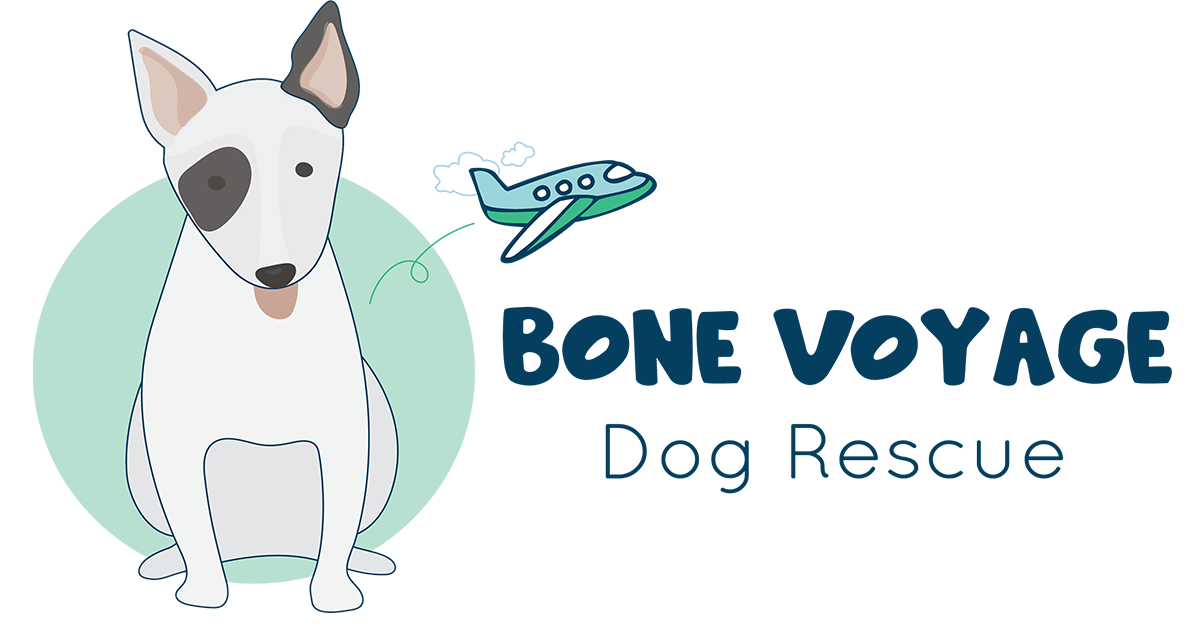- Sustainable Tails
- Posts
- Sustainable Tails
Sustainable Tails
How To Bond With A Rescue Dog, Volunteering At Pet Shelters As A Foundation For A Career In Animal Sciences, and National Pet Preparedness Month
Hello and welcome back to Sustainable Tails. We are always excited to share our thoughts with you, our valued subscribers, about a variety of pet topics, and this week is no different. We hope you enjoy what we have put together this week!
Tips For Bonding With A Rescue Dog

Bonding with a rescue dog can be a deeply rewarding experience, but it often requires patience, understanding, and consistent effort. Rescue dogs may come from challenging backgrounds, so establishing trust and forming a strong bond is crucial for their well-being and your relationship.
Patience and Understanding: Rescue dogs often carry past traumas or anxieties that make them wary or fearful. It’s important to be patient and give your new dog time to adjust to their new environment. Understanding their body language and cues can help you identify when they’re feeling anxious or scared. Allow them to approach you on their own terms and avoid forcing interactions.
Consistent Routine: Establishing a consistent routine can provide a sense of security for your rescue dog. Regular feeding times, walks, and play sessions help them understand what to expect, reducing anxiety and building trust. Consistency also aids in house training and reinforces good behavior. A predictable schedule can make your dog feel more at ease in their new home.
Positive Reinforcement: Using positive reinforcement techniques, such as treats, praise, and affection, can encourage your dog to trust you and feel secure. Rewarding them for good behavior helps build confidence and strengthens your bond. Avoid punishment, as it can lead to fear and further behavioral issues. Focus on rewarding positive actions to create a trusting and loving relationship.
Engage in Interactive Play: Playtime is a great way to bond with your rescue dog. Interactive games like fetch, tug-of-war, or puzzle toys not only provide physical exercise but also mental stimulation. Play helps build positive associations and creates joyful experiences between you and your dog.
Training Together: Training sessions are not just about teaching commands; they’re opportunities to bond. Positive, reward-based training helps your dog learn and trust you. Short, frequent training sessions can improve your dog’s behavior and your relationship.
Building a bond with a rescue dog takes time and effort, but the love and loyalty you’ll receive in return make it all worthwhile. By being patient, consistent, and positive, you can help your rescue dog feel safe, secure, and loved in their new home.
Kitty Curiosities
Did you know your feline friend might be a tiny mental marvel? While a dog's best friend might steal our hearts with loyalty, cats pack a surprising punch in the brain department. They boast double the number of neurons in their cerebral cortex – the area responsible for complex thought and information processing – compared to canine companions! This neural superpower might explain those cunning hunting tactics and impressive problem-solving skills. So next time your kitty outsmarts you for a treat, remember – there's a whole lot going on behind those mysterious eyes!
Thinking Of A Career In Animal Sciences?

Volunteering at a pet shelter can be an invaluable stepping stone for anyone considering a career in animal science. The hands-on experience, knowledge, and skills gained through shelter work can provide a solid foundation for future professional endeavors in this field.
Practical Experience: One of the most significant benefits of volunteering at a pet shelter is the practical experience it offers. Shelters house a variety of animals, each with unique behaviors, health issues, and needs. As a volunteer, you’ll learn to handle and care for different animals, observe their behaviors, and understand their needs. This real-world experience is crucial for anyone pursuing a career in animal science, where hands-on skills are essential.
Understanding Animal Behavior: Volunteering at a shelter provides insights into animal behavior, including how animals react to different stimuli and environments. This knowledge is crucial for careers in animal behavior, veterinary science, and wildlife management. Understanding animal behavior helps in diagnosing issues, developing training programs, and ensuring the well-being of animals in various settings.
Health and Welfare Knowledge: Shelters often deal with animals that have health problems or have been neglected. As a volunteer, you’ll learn about common health issues, basic first aid, and the importance of regular veterinary care. This knowledge is foundational for careers in veterinary medicine, animal rehabilitation, and animal welfare advocacy.
Communication and Teamwork Skills: Working at a shelter requires effective communication and teamwork. You’ll interact with other volunteers, staff, and the public, learning to convey important information about animal care and adoption. These communication skills are invaluable in any animal science career, where collaboration with colleagues, clients, and the community is often required.
Building a Network: Volunteering also allows you to build a network of professionals in the animal care and science field. Shelters often work with veterinarians, trainers, and animal behaviorists. By volunteering, you can make connections that might lead to internships, job opportunities, or mentorships in the future.
Making a Difference: Finally, volunteering at a shelter provides a sense of fulfillment and purpose. Knowing that you are making a positive impact on the lives of animals can be incredibly motivating and reaffirm your commitment to a career in animal science.
In conclusion, volunteering at a pet shelter offers a comprehensive learning experience that prepares you for various careers in animal science. The practical skills, knowledge, and connections you gain will be invaluable as you pursue your passion for animal care and science.
Pet Poem Place
June's golden light spills through the pane,
Waking Whiskers from his slumber-reign.
He stretches long, a sleek black sigh,
Then spots his friend with a joyful cry.
Max, the golden dog, with tail a blur,
Barks at the day, a joyful curr.
He nudges Whiskers, fur against fur,
Ready for romps when the sun's at its pure.
Long days unfurl, a canvas bright,
For playful chases in warm sunlight.
Max, the eager, with frisbee held tight,
Races ahead, a blur of pure white.
Whiskers, the sly, with a knowing wink,
Stalker supreme, beneath the garden's brink.
He pounces on bugs, a feathery feat,
While Max retrieves with joyful heat.
Ice cream drips, a sticky delight,
Shared in the sun, a summery bite.
Belly rubs shared on the grassy floor,
Cat and dog friends, wanting nothing more.
June's gentle breeze whispers secrets untold,
Of lazy naps and adventures bold.
For these best friends, in this happy tune,
Summer's a symphony played just for them, in June.
June Is National Pet Preparedness Month

June is National Pet Preparedness Month, a crucial reminder to include our beloved pets in our emergency plans. Whether you’re at home or traveling, ensuring the safety and well-being of your furry friends is essential during unexpected situations.
Creating a Pet Emergency Kit
Just as you have a kit for yourself, your pet needs one too. A pet emergency kit should include essential items such as food, water, medications, medical records, a first aid kit, and a sturdy leash or carrier. Don’t forget comfort items like a favorite toy or blanket to help reduce stress.
Identifying Pet-Friendly Shelters
In the event of an evacuation, not all shelters accept pets. Research and identify pet-friendly shelters, hotels, or boarding facilities in advance. Websites like BringFido.com can help locate pet-friendly accommodations. Having a list of options ensures you won’t be scrambling during an emergency.
Keeping Identification Up-to-Date
Ensure your pet is microchipped and that their ID tags are up-to-date with your current contact information. This step is crucial if you become separated from your pet. Including a secondary contact person on the ID tag is also a good idea.
Preparing for Travel
If you’re traveling with your pet, pack a travel-friendly version of your emergency kit. Include copies of vaccination records and make sure your pet is comfortable in their carrier. Familiarize yourself with pet regulations for your travel destination, including any quarantine rules or vaccination requirements.
Practice Makes Perfect
Conduct practice drills to ensure your pet is familiar with the routine in case of an emergency. Practice getting your pet into their carrier quickly and calmly. This preparation can help reduce stress for both you and your pet during a real emergency.
Communication Plan
Have a plan for how you will communicate and reunite with family members if separated. Designate meeting spots and make sure everyone, including your pets, knows where to go.
National Pet Preparedness Month serves as a critical reminder to include our pets in our emergency planning. Whether at home or on the go, taking these steps can ensure the safety and well-being of your furry family members during unexpected situations.
Just For Fun
Well, that’s a wrap for this week. Please be sure to share this growing community of pet lovers from around the world with your friends and family. We send you an unobtrusive email once a week right to your mailbox. That’s all there is to it! We welcome any and all input from all of our subscribers. Send us topics you’d love to know more about, or just drop a line to say hello. There are exciting things coming as Sustainable Tails grows in popularity!
Sustainable Tails is dedicated to helping you create a harmonious and eco-friendly life for you and your pets. By embracing zero-waste and pet-friendly grooming products and sustainably exploring the outdoors together, you're not only enhancing the well-being of your furry companions but also contributing to a healthier planet.
Thank you for joining us on this weeks adventure. Continue to spread the word on what we are doing here, and always know your comments and participation in our community are welcomed with open paws. We’ll see you right here next week, so continue making sustainable choices and cherishing each and every day with your beloved pets!
Joshua McCarty
Founder, Sustainable Tails
P.S. Have a topic you’d like us to cover in our next newsletter? Share your ideas and questions with us. We’d love to hear from you!
P.P.S. Take a peek over at our partner website for an ever growing list of sustainable and eco-friendly pet supplies and accessories, as well as many other pet friendly products!


